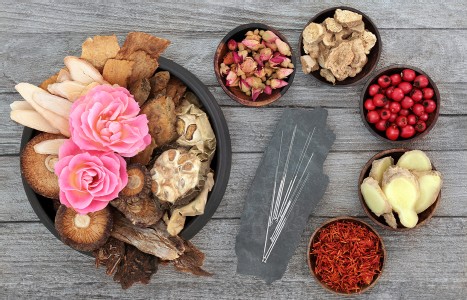Did any of you ever get the feeling in school that it simply was not OK to speak about wanting to be successful? To get into the nitty gritty details of how to make money in practice? Maybe you were even someone like me who was directly told by someone in a position of power that I needed to take what I could get because in private practice, I wouldn’t make money.
Recognition and Prevention of Herb-Drug Interactions, Part 1:Pharmacokinetic Interactions
According to the Journal of the American Medical Association, it is estimated that 15 million adults in the United States in 1997 (18.4 percent of all prescription users) took prescription drugs concurrently with herbal remedies and/or vitamins.1 Even though herbal remedies are classified as dietary supplements in the United States, many of them possess strong medicinal properties that may affect the patients adversely if used incorrectly. This article addresses the issue of potential herb-drug interactions for the 15 million adults who took both prescription drugs and herbs, and is relevant to all of the health care practitioners who care for them. With some insight in pharmacology, one can foresee possible herb-drug interactions and take the necessary precautions to avoid such adverse reactions.
BACKGROUND
The practice of medicine is now at a crossroads: Countless patients are being treated simultaneously with both Western and Chinese medicine. It is quite common for a patient to seek herbal treatment while taking several prescription medications. As the general public grows increasingly open to the use of herbs and supplements, both patients and the health practitioners who care for them are becoming more alert to the potential for occasional adverse herb-drug interactions. Safety has become a major topic of discussion. Even though herbal remedies are classified as dietary supplements in the United States, it must be noted that if used incorrectly, herbs, as with any substance, may affect patients adversely. The safest route of access to herbal therapy is through a well-qualified herbalist.
Although Chinese herbal medicine has been prescribed safely by professionals in the West for many years now and a great deal of research has been amassed in China, there are still few formal studies published in English to document the safety and efficacy of combining herbs with prescription drugs. Some questions posed by Western health care practitioners or patients are difficult to answer quickly with documented specifics. However, with some general insights into pharmacology, one can foresee possible interactions and take appropriate precautions to prevent incompatible combinations.
INTRODUCTION
The concept of interaction refers to the possibility that when two (or more) substances are given concurrently, one substance may interact with another, or alter its bioavailability or clinical action. The net result may be an increase or a decrease in the effectiveness of one or both substances. It is important to note that interactions may yield positive effects (achieving better therapeutic effects at lower dosage) or negative results (creating unwanted side effects or adverse reactions). Most of the possible interactions may be classified in two major categories: pharmacokinetic and pharmacodynamic.2,3
A. PHARMACOKINETIC INTERACTIONS
Pharmacokinetic interaction refers to the fluctuation in bioavailability of herb/drug molecules in the body as a result of changes in absorption, distribution, metabolism and elimination.2,3
A-1. Absorption
Absorption is the term that describes the process of the physical passage of herbs or drugs from the outside to the inside. The majority of all absorption occurs in the intestines, where herbs or drugs must pass through the intestinal wall to enter the bloodstream. Several mechanisms may interfere with the absorption of drugs through the intestines.4,5
The absorption of herbs may be adversely affected if they are administered with drugs that may promote binding in the gastrointestinal tract. Drugs such as cholestyramine (Questran), colestipol (Colestid), sucralfate (Carafate) and orlistat (Xenical) may bind to certain herbs, forming an insoluble complex that decreases the absorption of both substances. Similarly, herbs such as zao jiao (Fructus gleditsiae) and zao jiao ci (Spina gleditsiae) also have binding effects, and may decrease the absorption of other herbs and/or drugs if taken together. Because of the large size of the insoluble complex, few or no molecules of either substance pass through the intestinal wall.6
Herb absorption may be adversely affected in the presence of drugs that change the pH of the stomach. Antacids, cimetidine (Tagamet), famotidine (Pepcid), nizatidine (Axid), ranitidine (Zantac), omeprazole (Prilosec) and lansoprazole (Prevacid) may neutralize, decrease or inhibit the secretion of stomach acids. In contrast, certain herbs also decrease the acidity of the stomach, such as hai piao xiao (Endoconcha sepiae), huang lian (Rhizoma coptidis) and wu zhu yu (Fructus evodiae). With this subsequent decrease in stomach acidity, herbs may not be broken down properly in the stomach, leading to poor absorption in the intestines. To minimize this interaction, herbs are best taken separately from these drugs by approximately two hours.4,5
Drugs that affect gastrointestinal motility also may affect the absorption of herbs. Gastrointestinal motility is the rate at which the intestines contract to push food products from the stomach to the rectum. Slower gastrointestinal motility means the herbs stay in the intestines for a longer period of time, thereby increasing the potential absorption. Conversely, more rapid gastrointestinal motility means the herbs stay in the intestines for a shorter time, which may decrease absorption. Drugs such as haloperidol (Haldol) decrease gastrointestinal motility and may increase herb absorption, while drugs such as metoclopramide (Reglan) increase gastrointestinal motility and possibly decrease herb absorption. On the other hand, many herbs that promote qi circulation may have a regulatory effect on intestinal peristalsis.4,5
Therefore, it may be necessary to decrease the dosage of herbs when the patient is taking a drug that decreases gastrointestinal motility and increases overall absorption. Likewise, it is probably helpful to increase the dosage of herbs when the patient is taking a drug that increases gastrointestinal motility and thus decreases overall absorption.
A-2. Distribution
After absorption, herbs or drugs must be delivered to the targeted area in order to exert their influence. Distribution refers to the processes by which herbs or drugs (once absorbed) are carried and released to different parts of the body. Currently, it appears that the majority of herbs and drugs do not have any clinically significant interactions affecting distribution and thus can safely be taken together. The exception seems to be if a drug has a narrow range-of-safety index and is highly protein-bound, in which case interaction with other substances might occur during the distribution phase. Examples of drugs that have both a narrow range-of-safety index and a highly protein-bound ratio include warfarin (Coumadin) and phenytoin (Dilantin). Unfortunately, it is very difficult to predict whether an individual herb will interact with either one of these drugs, because there are no known tests or experiments documenting such interactions.4,5
A-3. Metabolism
Once metabolized by the liver, most herbs and drugs become inactive derivatives. The rate at which the liver metabolizes a substance determines the length of time it stays active in the body. If the liver was induced to speed up its metabolic rate, herbs and drugs would be deactivated at a more rapid pace, and the overall effectiveness of ingested substances would be lower. On the other hand, if the liver was made to slow down its metabolism, herbs and drugs would be deactivated at a slower pace and the overall impact of the substances would be greater.
In general, drugs that induce greater liver metabolism do not exert an immediate effect. The metabolism rate of the liver changes slowly, over several weeks. Therefore, the effect of accelerated liver metabolism is not seen until weeks after the initiation of drug therapy. Some examples of pharmaceuticals that speed hepatic metabolism are: phenytoin (Dilantin), carbamazepine (Tegretol), phenobarbitals and rifampin (Rifadin).4,5 Therefore, herbs given in the presence of one of these products may be deactivated more rapidly, and their overall effectiveness lowered. Under these circumstances, a higher dose of herbs may be required to achieve the desired effect. In contrast, guan ye lian qiao (Herba hypericum), also known as St John's Wort, may stimulate liver metabolism and decrease plasma concentration of drugs such as cyclosporine (Sandimmune/Neoral), ethinyloestradiol and desogestrel (combined oral contraceptive), theophylline (Theo-Dur), digoxin (Lanoxin), and indinavir (Crixivan).7
In great contrast, drugs that inhibit liver metabolism have an immediate onset of action. The rate of liver metabolism may be greatly impaired within a few days. Pharmaceuticals that slow or inhibit liver metabolism include: cimetidine (Tagamet), erythromycin, ethanol, fluconazole (Diflucan), itraconazole (Sporanox) and ketoconazole (Nizoral), among others.4,5 When a patient takes these drugs concurrently with herbs, there is a higher risk of herbal components accumulating in the body, as the ability of the liver to neutralize them is compromised. If the herbs are metabolized more slowly, their overall effectiveness may be prolonged. In this case, one may need to lower the dosage of herbs to avoid unwanted side effects. One herb that has been shown to inhibit liver microsomal cytochrome P-450 in rats is bai zhi (Radix angelicae dahuricae). Because of inhibited metabolism, concurrent use of the herb may lead to increased plasma concentration of other drugs, such as testosterone, tolbutamide, nifedipine, bufuralol and diazepam.8 Depending on the half-life in the body of drugs that influence liver metabolism, it may be necessary to increase or decrease the dosages of herbs for weeks or even months after discontinuation of the pharmaceutical substance, along with consistent monitoring.
A-4. Elimination
While the liver neutralizes incoming drugs and herbs, the kidneys are responsible for eliminating the substances and their metabolites from the body. If the kidneys are damaged, the rate of elimination is slowed, leading to an accumulation of active substances in the body. Important examples of drugs that damage the kidneys include amphotericin B, methotrexate, tobramycin and gentamicin.4,5 As a safety precaution, when prescribing herbs for a patient who is currently taking or has recently taken one of these drugs, it may be wise to lower the dose of herbs to avoid unnecessary and unwanted side effects. Similarly, there are a few herbs that may be potentially toxic to the kidney, and must be avoided. Herbs that are potentially nephrotoxic include plants that contain aristolochic acid, such as guan mu tong (Caulis aristolochiae manshuriensis), guang fang ji (Radix aristolochiae fangchi), ma dou ling (Fructus aristolochiae), qing mu xiang (Radix aristolochiae) and tian xian teng (Herba aristolochiae).9
A-5. Summary of Pharmacokinetic Interactions
The pharmacokinetic interactions listed above include both theoretical and actual interactions. Though such interactions are possible, the extent and severity of each interaction will vary depending on the specific circumstances, such as the dosages of all the substances, the inherent sensitivity of each patient, individual body weight and metabolic rate.
References
- Eisenberg D, et al. Trends in alternative medicine use in the United States, 1990-1997. JAMA, Nov. 11, 1998.
- Berkow R and Fletcher A. The Merck Manual of Diagnosis and Therapy, 16th Edition. Merck Research Laboratories, 1992.
- Fauci A, et al. Harrison's Principles of Internal Medicine, 14th Edition. McGraw-Hill Health Professions Division, 1998.
- Philip D. Hansten: Understanding drug-drug interactions. Science and Medicine, January-February 1998:16-25.
- Hansten P. Chapter 3: "Drug Interactions." Applied Therapeutics. Applied Therapeutics, Inc., 1993.
- Segal S and Kaminski S. Drug-nutrient interactions. American Druggist, July 1996:42-49.
- PDR for Nutritional Supplements, 1st Edition. Medical Economics, 2001.
- Ishihara K, et al. Interaction of drugs and Chinese herbs: pharmacokinetic changes of tolbutamide and diazepam caused by extract of Angelica dahurica. Journal of Pharmacy & Pharmacology, 2000;52(8):1023-9.
- Chen J and Chen T. Chinese Medical Herbology and Pharmacology. Art of Medicine Press, 2004.


